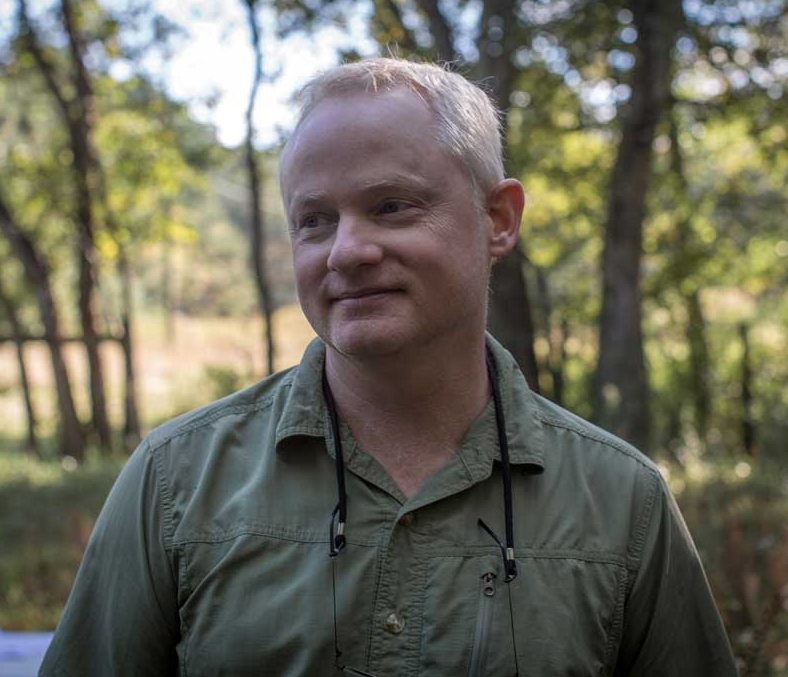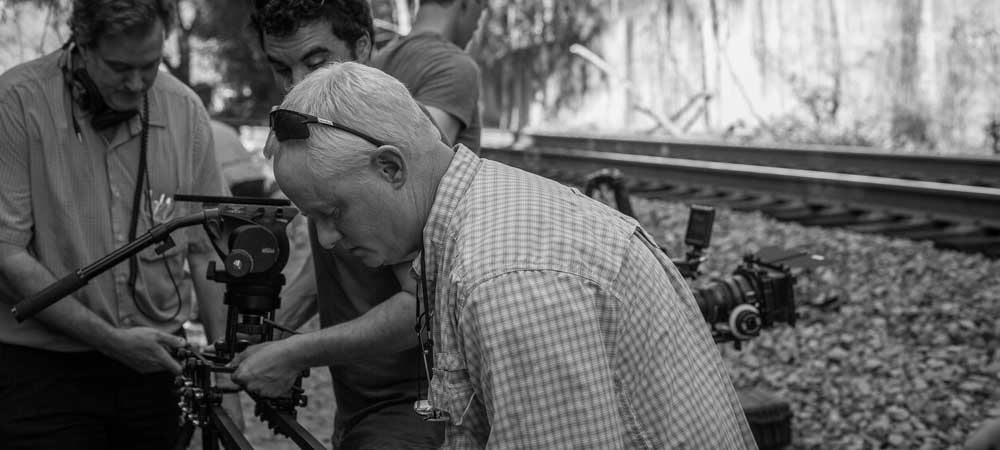While attending the Orlando Film Festival in October of last year, I had the pleasure of meeting and chatting with Michael Curtis. He was there for the showing of his first film short, “Gift.” Like many independent filmmakers, he has spent many years doing commercial film projects for clients but finally wanted to create something entirely his own. In this article I will cover Curtis’ entry into the commercial film production world and some of the projects he has worked on. In a second article, I will discuss how Curtis brought all that experience to his first independent film project and the creative process to make “Gift” a reality.

Michael Curtis spent years in commercial production before branching out to independent filmmaking. (Photo: Filmstigator)
Curtis attended the University of Alaska Anchorage. He began a career that spanned multiple disciplines in media. He has been a television and film editor for the PBS, ABC, TNT, Cartoon and other networks, as well as a director and producer for both independent film and commercial projects.
In 1999, he founded EditLab, a small post-production boutique in Atlanta. Over time, clients began seeking his expertise in the production phase as well, and EditLab evolved into a turnkey production company. In the years since, he has received over 100 awards for his film production and editing work. He received Finalist Award in both Directing and Editing from the New York Festivals International Television and Film Awards.

Curtis often works with microcrews where individuals much perform several different tasks during filming. (Photo: Filmstigator)
Micro-budgets and Micro-Crews
With years of experience in multiple disciplines, Curtis has learned how to produce short films on limited, and sometimes very limited, budgets. Many of the projects he has worked lacked the budgets necessary to handle the various tasks support even a small production team of six to eight people. In many instances, he was forced to assemble what he termed a micro-crew in order to stay within budget. Curtis defines a micro-crew as two to three people, including himself, who have to handle multiple tasks. These typically involve:
- Cinematography
- Lighting & grip
- Makeup
- Producing
- Directing
- Assistant directing and talent coordination
- Production assistant and equipment handling
- Audio recording
- Client services
“Working ‘micro’ is not something that will suit every production out there,” Curtis admits, “and I am certainly not saying it’s the best way to tackle production in general. But, it has worked for my clients on several occasions. You’ve got to have the right people [with] a highly concentrated skill set, so that each person can perform multiple tasks on set with proficiency.”
Curtis knows from experience the limitations of employing a micro-crew and what can reasonably be expected to achieve. Knowing this ahead of time, it is essential for a pre-production meeting to discuss each person’s tasks prior to shooting, just as it would take place on a generously budgeted project. Compromises will have to be made and it’s best to consider these during early discussions.

Curtis believes independent filmmakers must be more than just professional, but must have a network of other like-minded people who can work together to realize a film project. (Photo: Filmstigator)
There are pluses and minuses to the micro-crew approach. The small crew can help meet tight budgets and make the project happen for the client and the production company. The downside of this, Curtis has found, is that you might become labeled as a shoestring filmmaker who can always deliver micro-budget productions—and that is all you will get. In the final analysis, the filmmaker must decide if what the client is demanding with the budget he is offering is really achievable.
In projects of his own and other professionals he has worked with, invariably there is a client who makes too many demands within the allotted budget. There is the risk of taking on too many tasks, or client options, than can reasonably be achieved by the micro-crew. In these cases, Curtis admits, “It may make the most sense to turn down a project altogether if the budget isn’t adequate.”
The Award Winners
Curtis has won many awards for his film productions for television and for corporate clients. These have been instrumental in his maintaining a steady stream of work both before and after the founding of EditLab. A sample of his work is the Interstitial feature on James Cameron’s Avatar for TNTLA’s Academy Awards telecast.
One of his most emotionally moving productions was a recruitment film he did for the American Cancer Society (ACS). The film shows men and women who volunteer to run in mini-marathons to raise funds for the ACS and to raise cancer awareness. Many of those portrayed in DetermiNation lost loved ones to cancer and they wear ribbons of those they knew who passed away from the disease. In the end, the film is uplifting in that it provides hope, encouragement and we witness the joy of fellowship the ACS volunteers experience.
One of Curtis’s award-winning productions was “Grounded.” The 20-minute film is a cautionary tale on the effects of sleep deprivation, which he created for the Federal Aviation Administration (FAA). The FAA wanted something completely different to grab the viewer’s attention and leave an indelible impression. “Grounded” received seventeen industry awards.
Despite his success in producing such films, Curtis longed for the freedom to create films of his own. In Part 2 on Michael Curtis, I will cover the establishment of his film collaborative, Filmstigator and its first production, Gift.


Trackbacks/Pingbacks